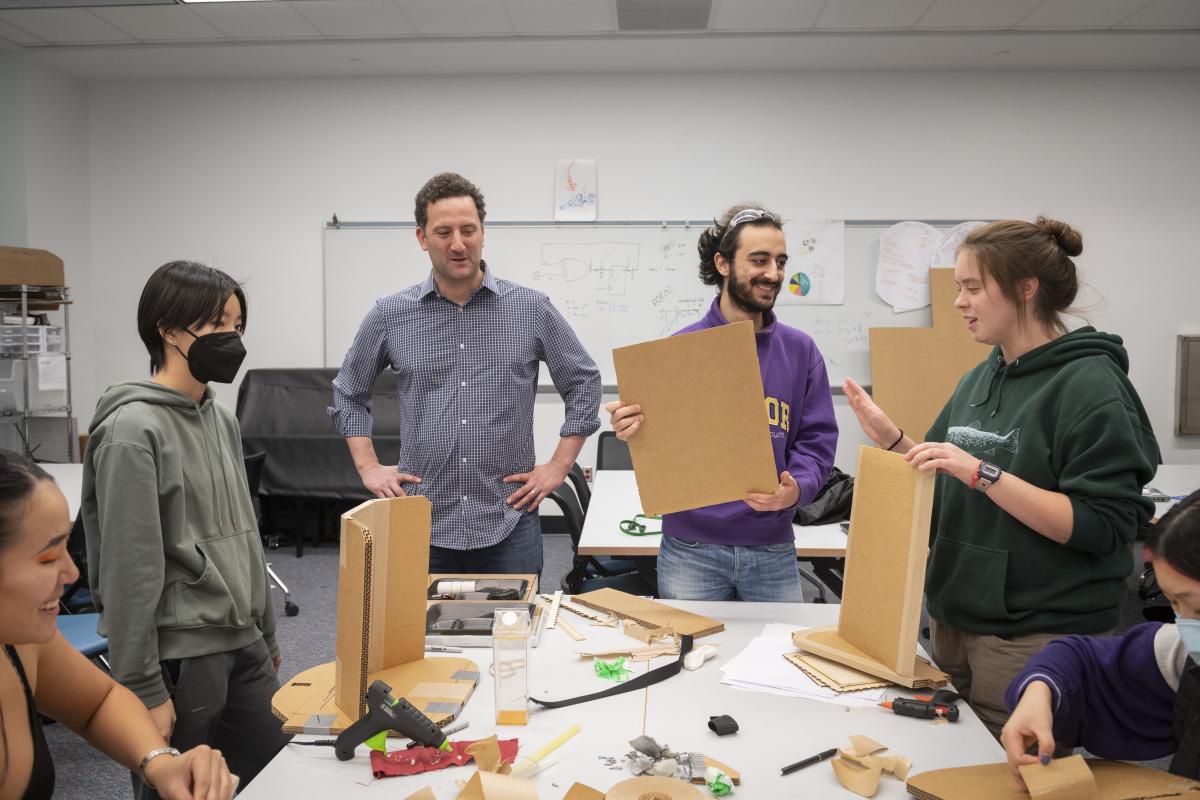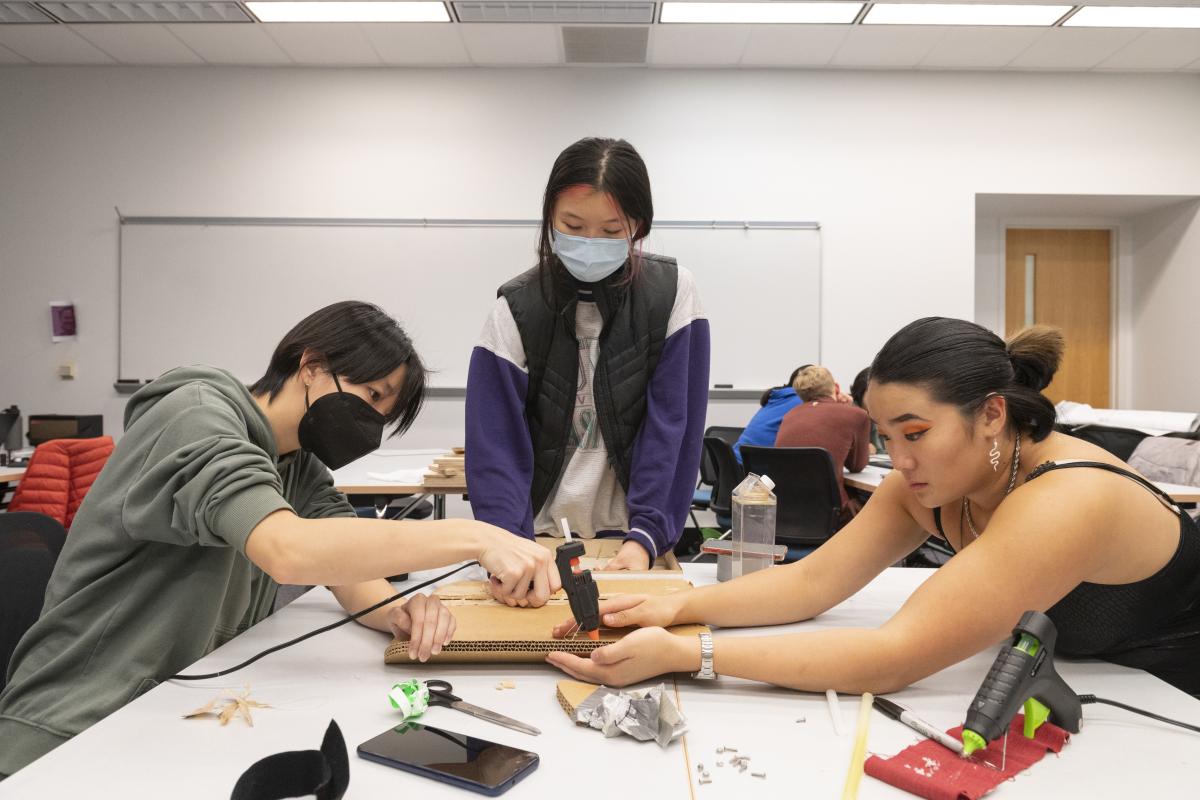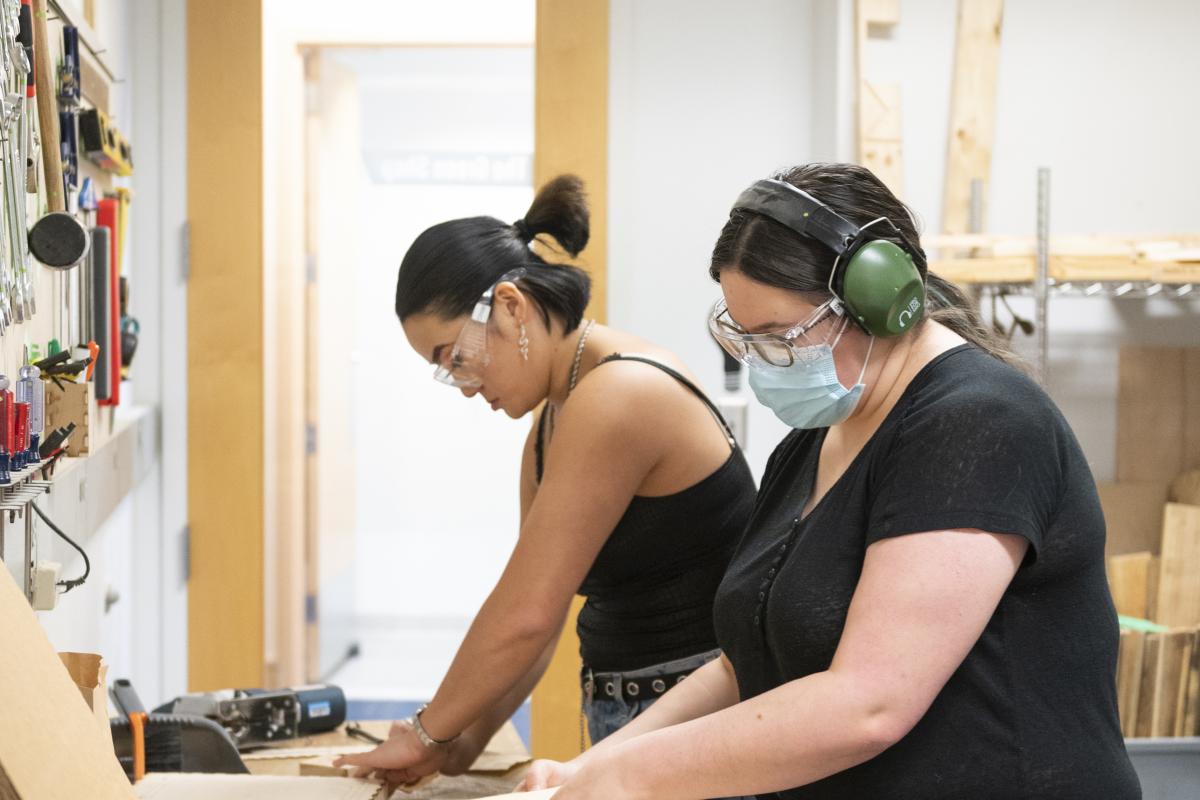Olin students design accessible technology for community members with disabilities in forward-thinking, human-centered course.
Reflecting Olin’s vision of Engineering for Everyone, Olin’s Technology, Accessibility, and Design, or TAD for short, sees students working one-on-one with community partners to design a technology that enhances accessibility for users with disabilities.
“While there are great adaptations out there, mainstream technology makers aren’t always taking the most accessible viewpoint,” says co-instructor Paul Ruvolo, associate professor of computer science.
“The idea behind TAD is that our students will be going out in the world and really building the future, so we want them to understand the stakes when designing new technologies.”
Co-created by Ruvolo and Caitrin Lynch, dean of faculty and professor of anthropology, in 2018, TAD begins by delving into different approaches to designing technologies that foster accessibility and the ways in which society marginalizes folks with disabilities. Students meet multiple guest speakers, such as a chef with visual impairments who cooked for the class, a Paralympian cyclist, and a web accessibility specialist.

Cory Knox ’23, Jennifer Lee ’23, Professor Paul Ruvolo, Efe Gulcu ’23, Declan Ketchum '23, and Emily Wan ’23 (in order respectively) chatting and working in the TAD classroom.
“Many students have never interacted with people who have disabilities before, so a big focus of the course is celebrating the flexibility of people and their capabilities, not ‘fixing what’s wrong with them,’” says Ruvolo.
After building a foundation of knowledge, students work in groups with community partners on design challenges around disabilities. This year, students tackled everything from designing a mobile app to improve racial equity in mental health care to creating data visualizations for the Perkins School for the Blind.
One group created assistive technologies for two different elementary students in nearby Needham Public Schools. The first was Baohua, a fourth-grader with spina bifida seeking more independence during lunchtime.
“Baohua is an independent go-getter and likes to do things himself, but he was having trouble both using his crutches and carrying his tray through the lunch line without spilling,” says Suzanne Galvin, a physical therapist who works with both students. “I had exhausted my knowledge of available assistive technology, so in collaboration with Baohoa’s mother, we contacted Paul with the idea of coming up with something to help him.”
The students — Efe Gulcu ’23, Evelyn Kessler ’24, Cory Knox ’23, Jennifer Lee ’23, and Emily Wan ’23 — worked closely with Baohua, his mother, and Galvin throughout the co-design process.

Jennifer Lee ’23, Emily Wan ’23, and Cory Knox ’23 assembling prototype.
“We spent a lot of time in the beginning doing blue-sky ideas, but we knew that one of Baohua’s biggest goals was to fit in with his peers,” says Wan, a mechanical engineering major. “We went to his school to see his environment, he came and visited the Olin Shop to test out some prototypes, and we asked him lots of questions throughout.”
The team ended up with a plastic tray secured with a fabric and Velcro strap around Baohua’s neck and waist, produced in his favorite color, orange.
“Working with Olin on this project has been great for Baohua on a lot of levels,” says Kristen Ward, Baohua’s mother. “He’s a kid who wants to get his work done right and quickly, so for him to see these college students working on a project, making mistakes, and sticking with it while collaborating and trying new things was really powerful.”
The second student is a second-grader with dwarfism who needed appropriate seating in class.
“This student is short in stature and we had tried everything to make him comfortable, using cushions to prop his feet and back up and trying to find a chair and table to suit him,” says Galvin.

Corey Knox '23 and Evelyn Kessler '24 manufacturing parts for their prototype.
The Olin team ended up working with Perkins’ Assistive Design Center to alter a standard classroom chair with a custom-built backrest and foot box that can both be adapted as he grows.
“One of biggest things for both projects was giving these kids a voice in what they want,” says Galvin. “These kids have to live in world not built for them, and the Olin students were so receptive to making things work and looking at them from the kids’ viewpoint. They both felt really special to be a part of the process.”
As for the students, this deep dive into accessible design has had a lasting impact. Wan hopes to work in assistive technology product design on the user-facing side, while Lee sees this as a passion she’ll incorporate into her life.
“I love working with people on relatively simple solutions that can make a big impact,” says Lee. “I’ve always had this idea of wanting to do assistive technology design on the side pro bono, so I’m thinking about ways I can make that sustainable in the future.”